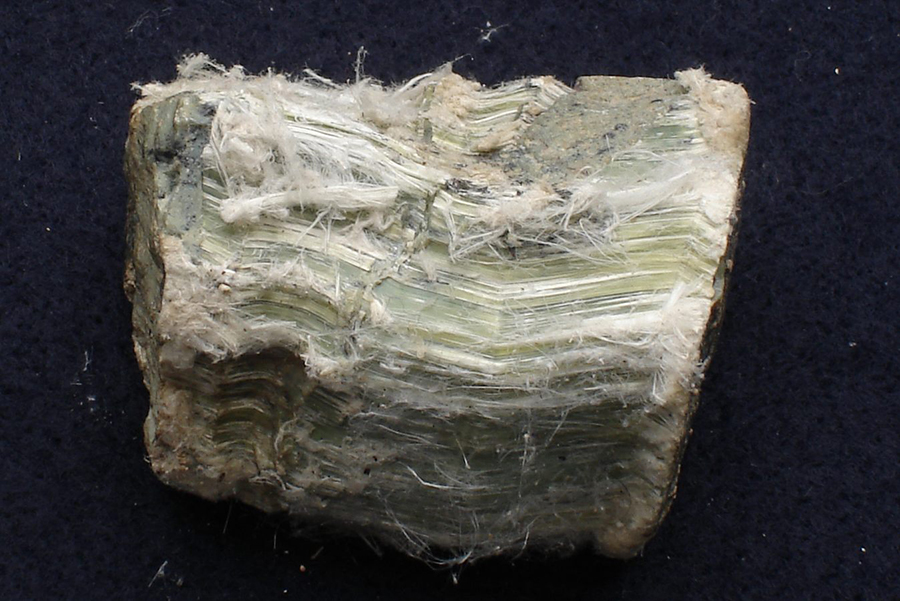New Study Challenges Assumption of Asbestos’ Ability to Move in Soil
Scripps scientist findings may have implications for current remediation strategies
By:
- Annie Reisewitz
Media Contact:
- Mario Aguilera - maguilera@ucsd.edu
- Robert Monroe - scrippsnews@ucsd.edu
Published Date
By:
- Annie Reisewitz
Share This:
Article Content

Chrysotile, one of the six types of asbestos. Photo: Eurico Zimbres/WikiMedia
A new study led by Scripps Institution of Oceanography at the University of California San Diego scientist Jane Willenbring challenges the long-held belief that asbestos fibers cannot move through soil. The findings have important implications for current remediation strategies aimed at capping asbestos-laden soils to prevent human exposure of the cancer-causing material.
Willenbring, along with University of Pennsylvania postdoctoral researcher Sanjay Mohanty, and colleagues tested the idea that once capped by soil, asbestos waste piles are locked in place. Instead they found that dissolved organic matter contained within the soil sticks to the asbestos particles, creating a change of the electric charge on the outside of the particle that allows it to easily move through the soil.
“Asbestos gets coated with a very common substance that makes it easier to move,” said Willenbring, an associate professor in the Geosciences Research Division at Scripps. “If you have water with organic matter next to the asbestos waste piles, such as a stream, you then have a pathway from the waste pile and possibly to human inhalation.”
Willenbring will present the new research during her presentation “The Fate of Asbestos in Soil: Remediation Prospects and Paradigms” at the 2016 American Chemical Society Meeting in Philadelphia on Monday, Aug. 22 at 2:10 p.m. in the Philadelphia Downtown Courtyard by Marriott Juniper's Ballroom.
Asbestos is comprised of six naturally occurring minerals that are formed by thin fibers. Asbestos mining in the U.S. began in the late 19th century and was widely used in a variety of products from insulation to car brake pads.
The U.S. Environmental Protection Agency currently caps asbestos waste piles with soil to avoid human exposure to the toxic dust that causes a rare cancer called mesothelioma.
The National Institute of Environmental Health Sciences (NIEHS) Superfund Research Program funded the research.
Share This:
You May Also Like
UC San Diego is Strengthening U.S. Semiconductor Innovation and Workforce Development
Technology & EngineeringStay in the Know
Keep up with all the latest from UC San Diego. Subscribe to the newsletter today.



